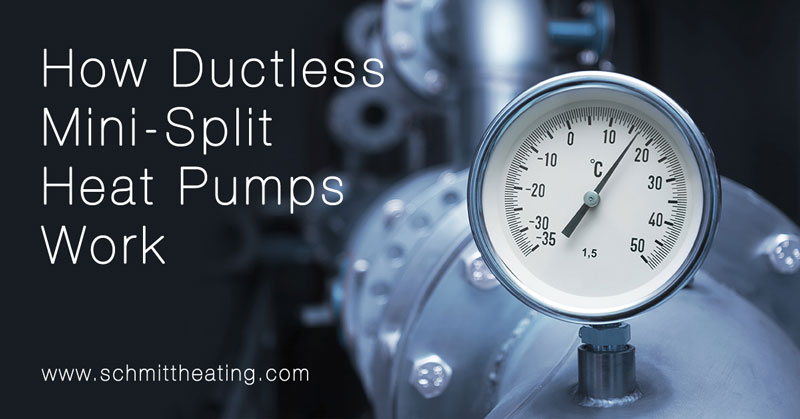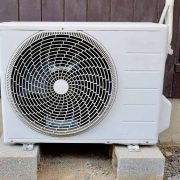How Ductless Mini-Split Heat Pumps Work
Ductless mini-split heat pumps are becoming increasingly popular, due to their efficiency and comfort. These compact units can be installed anywhere and are an excellent choice for just about any homeowner who is replacing an old and outdated air conditioner or furnace. It is also a wise choice when transitioning from boiler-based or electric resistance systems.
Benefits of Ductless Mini-Splits
HVAC equipment takes up a lot of space, and metal ducts have to connect from the HVAC system to each room in the house. Ductless mini-splits don’t require either ducts or an area reserved for large equipment. Instead, each room has a compact ductless unit that is installed directly onto the wall. The units connect through 1-inch conduits that extend to the outdoor units, either through the wall or the floor.
One of the biggest benefits of using ductless mini-splits is that you have zoned control over your heating and cooling. Each room’s unit is able to be controlled through a remote device. One area can have higher temperatures, while another can have lower. Additionally, you can completely turn off a device in a room that isn’t being used.
Ductless heat pumps are more efficient because they can bypass ductwork. Twenty to 30 percent of energy loss occurs through ductwork, due to cracks and portions that aren’t insulated. Some ductless systems can function with up to eight indoor units that connect to just one outdoor unit. This gives homeowners many options for deciding how to heat and cool their homes.
Benefits of a Heat Pump
Some ductless mini-splits only offer air conditioning, but ductless heat pumps deliver both air conditioning and heating. In addition to the benefits of using a mini split, the system’s air-source heat pump also provides many benefits, including:
- Consistent air flow and temperature—Unlike a forced air furnace that blasts heated air intermittently and between 90 and 100 degrees, heat pumps release air continuously, and between 120 and 125 degrees
- Higher efficiency—Air-source pumps only move heat around, but heat pumps find both warm and cool air and transfer it to where it needs to go.
- Natural dehumidifying capabilities—Since heat pumps run at lower speeds continuously, they dehumidify a home better than a standard air conditioning unit during the summer.
Ductless mini-split heat pumps lose efficiency in extremely cold weather, so they are not ideal for certain areas of the country. If you live in the Southwest, South, Northwest, and in parts of the West, you will most likely benefit from installing this system.
Follow us for additional information on heating, cooling and more.










Leave a Reply
Want to join the discussion?Feel free to contribute!